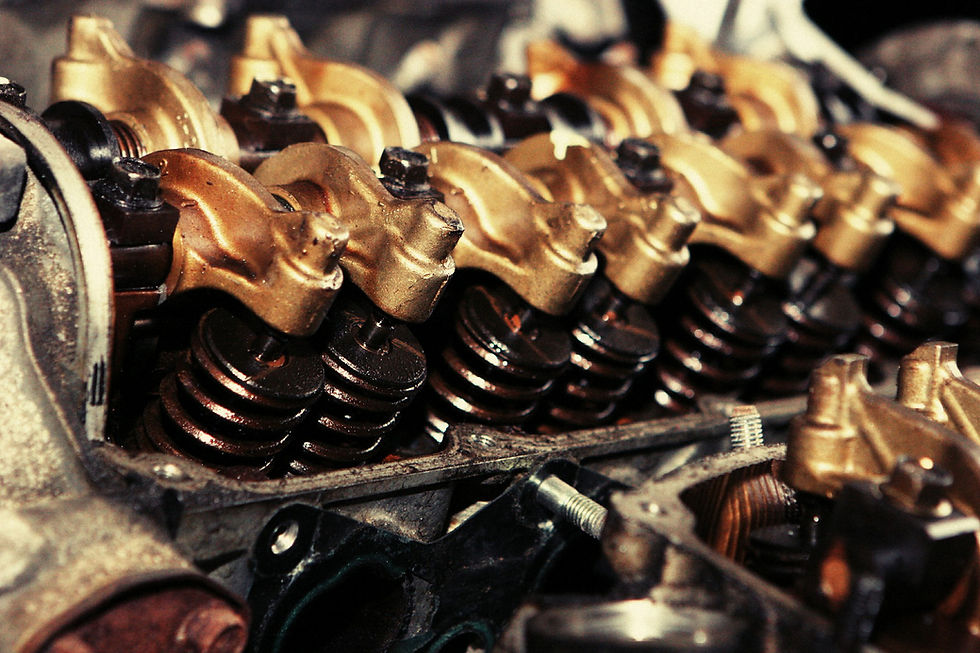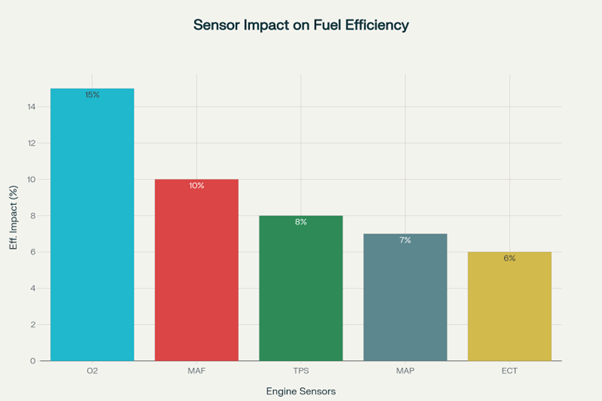Car Engine Parts and Their Functions | Detailed Guide to Engine Components
- blueprismautomotiv
- Aug 30, 2024
- 4 min read
Updated: Apr 18
Ever wonder what’s really going on under the hood of your car? Your engine is a marvel of engineering, with numerous parts working together to keep your vehicle running smoothly. But for many, the inner workings of a car engine remain a mystery. In this guide, we'll break down the essential car engine parts and explain their functions in detail. By the end, you'll have a solid understanding of what makes your engine tick – and why each component is crucial.

1. Engine Block
The engine block is the foundation of any engine. Often made from cast iron or aluminum, it houses the cylinders and various other components that make your engine run. Inside the block, you'll find the pistons, crankshaft, and camshaft, all working together to convert fuel into motion.
Function:
Acts as the central structure of the engine
Houses the cylinders, where combustion occurs
Supports other crucial engine components like the crankshaft and camshaft
2. Cylinder Head
The cylinder head sits atop the engine block and seals the top of the cylinders. It contains passages for air and fuel to enter and for exhaust gases to exit. The head also houses the valves and spark plugs, essential for the combustion process.
Function:
Seals the cylinders and maintains compression
Allows fuel and air to enter while letting exhaust gases exit
Houses components like valves and spark plugs, vital for combustion

3. Pistons
Pistons are cylindrical components that move up and down inside the cylinders. They are connected to the crankshaft through connecting rods. During the combustion process, the explosion of air-fuel mixture forces the pistons downward, creating the motion that powers your car.
Function:
Convert the energy from combustion into mechanical motion
Transfer force to the crankshaft through connecting rods
Vital for generating the power needed to move the vehicle
4. Crankshaft
The crankshaft is located at the bottom of the engine block. It's connected to the pistons via connecting rods. As the pistons move up and down, the crankshaft converts their linear motion into rotational motion, which ultimately turns the wheels of your car.
Function:
Converts the linear motion of the pistons into rotational motion
Transfers power from the engine to the drivetrain
Essential for driving the wheels of the vehicle
5. Camshaft
The camshaft is responsible for opening and closing the engine’s valves at the right time during the combustion process. It's connected to the crankshaft via a timing belt or chain, ensuring that the valves and pistons work in perfect harmony.
Function:
Controls the opening and closing of intake and exhaust valves
Ensures proper timing for the combustion process
Synchronizes with the crankshaft to maintain engine performance
6. Valves (Intake and Exhaust)
Valves control the flow of air and fuel into the engine and allow exhaust gases to exit. Intake valves open to let the air-fuel mixture enter the combustion chamber, while exhaust valves open to let out the burned gases after combustion.
Function:
Intake valves allow the air-fuel mixture to enter the cylinder
Exhaust valves release the burned gases after combustion
Critical for maintaining the engine's breathing and efficiency
7. Timing Belt/Chain
The timing belt or timing chain synchronizes the rotation of the crankshaft and camshaft. This ensures that the engine’s valves open and close at the correct times during the combustion process.
Function:
Maintains the timing of the camshaft and crankshaft
Ensures the valves and pistons operate in sync
Essential for engine timing and preventing mechanical failure

8. Spark Plugs
Spark plugs ignite the air-fuel mixture inside the cylinders. They produce a small but powerful spark that initiates the combustion process, which is the driving force behind your engine's operation.
Function:
Ignite the air-fuel mixture in the combustion chamber
Essential for starting the combustion process
Contributes to engine efficiency and power output
9. Fuel Injectors
Fuel injectors deliver the precise amount of fuel into the combustion chamber at the right time. Modern engines use electronic fuel injectors that spray fuel directly into the cylinders, optimizing combustion efficiency.
Function:
Precisely deliver fuel into the combustion chamber
Enhance fuel efficiency and power output
Essential for modern, electronically-controlled engines
10. Oil Pan
The oil pan is located at the bottom of the engine block and serves as a reservoir for engine oil. It also contains the oil pump, which circulates oil throughout the engine to lubricate moving parts.
Function:
Stores and circulates engine oil
Keeps engine components lubricated and cool
Prevents wear and tear on engine parts
11. Radiator
The radiator is part of the cooling system that prevents your engine from overheating. It dissipates the heat absorbed by the engine coolant, keeping the engine temperature within optimal ranges.
Function:
Cools the engine by dissipating heat from the coolant
Prevents the engine from overheating
Essential for maintaining optimal engine performance
12. Exhaust Manifold
The exhaust manifold collects exhaust gases from the engine’s cylinders and funnels them into the exhaust pipe. This component is vital for removing harmful gases and keeping the engine running smoothly.
Function:
Collects and directs exhaust gases out of the engine
Reduces back pressure for better engine performance
Helps control emissions
13. Turbocharger/Supercharger
While not found in all engines, a turbocharger or supercharger is a forced induction device that increases engine power by forcing more air into the combustion chamber. This allows for more fuel to be burned, resulting in more power.
Function:
Increases engine power output by forcing more air into the combustion chamber
Enhances performance and efficiency
Common in high-performance and some modern engines

14. Alternator
The alternator is responsible for keeping your car’s electrical system running by converting mechanical energy from the engine into electrical energy. It powers everything from your headlights to your car's battery.
Function:
Converts engine power into electrical energy
Keeps the battery charged and powers electrical components
Vital for the operation of your vehicle's electrical systems
Understanding the various car engine parts and their functions can give you a deeper appreciation for the engineering marvel that is your vehicle. Each component plays a crucial role in ensuring your engine runs smoothly and efficiently. Whether you're a car enthusiast or just a curious driver, knowing how your engine works can help you maintain your vehicle better and even diagnose issues when they arise.
So, the next time you pop the hood, you'll have a better idea of what you're looking at – and why it all matters.



شيخ روحاني
رقم شيخ روحاني
شيخ روحاني لجلب الحبيب
الشيخ الروحاني
الشيخ الروحاني
شيخ روحاني سعودي
رقم شيخ روحاني
شيخ روحاني مضمون
Berlinintim
Berlin Intim
جلب الحبيب
سكس العرب
https://www.eljnoub.com/
https://hurenberlin.com/
جلب الحبيب بالشمعة
You may use also this tool: licenseplatelookup.org to get history of any car before making purchase.